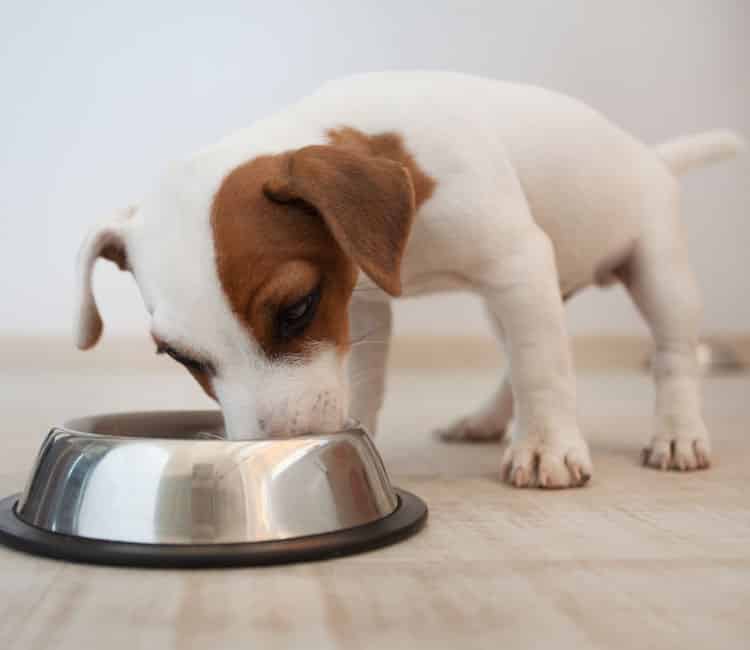As with many synthetic substances that make their way into our foods, the opinions on propylene glycol are varied and contradictory. TGH aims to cut through the hype and offer a balanced view, and answer the question. What is the truth about the safety of propylene glycol?
What Is Propylene Glycol?
Propylene Glycol is essentially used as a solvent or surfactant. It is a viscous, colourless, odourless liquid, with a faintly sweet taste. You will find it in a variety of products, from engine coolants, to artificial smoke and even snack foods….and this cross over is what has many people concerned.
Propylene Glycol is also known as:
• 1,2-propanediol,
• 1,2-dihydroxypropane,
• methyl glycol, and
• trimethyl glycol (Agency for Toxic Substances and Disease Registry 1997)
It has a low volatility and low toxicity – but how low is acceptable to eat?
One important thing to remember is that propylene glycol is formulated in more than one strength. There is an industrial grade, used in brake fluid, engine coolant, paints and varnishes. And there is also a pharmaceutical grade, which you will find in some cosmetic products as well as some foods. So if you read material that questions how we can consume a compound that is used in enamels, be aware that the two formulations are very different.
But does that mean it’s safe?
How Can We Come Into Contact With Propylene Glycol?
The Agency for Toxic Substances and Disease Registry gives us a fantastic summary of how we might be exposed to propylene glycol.
Propylene glycol can enter your bloodstream if you breathe air containing mists or vapors from either compound. It can also enter your bloodstream through your skin if you come in direct contact with it and do not wash it off. If you eat products that contain propylene glycol, it may enter your bloodstream. Exposure of the general population to propylene glycol is likely since many foods, drugs, and cosmetics contain it.
Propylene glycol breaks down in the body in about 48 hours. However, studies of people and animals show that if you have repeated eye, skin, nasal, or oral exposures to propylene glycol for a short time, you may develop some irritation.
Is Pharmaceutical Grade Propylene Glycol Safe To Eat And Apply To Our Skin?
The pharmaceutical grade of propylene glycol is of a far lower concentration than the industrial grade. It is commonly used to keep snack foods moist, as it absorbs excess water and maintains moisture. You can recognise it as e-number E1520. It is also used in oral, topical and injectable drugs.
It has also been approved for use in military dietary rations and many tobacco products, and is commonly used in the manufacture of some textiles.
So what do the governing bodies say?
The Material Safety Data Sheet for propylene glycol lists only the industrial grade formulation. It states that propylene glycol can cause skin, liver and kidney damage. It is classed as a hazardous substance.
The FDA has placed pharmaceutical grade propylene glycol on the GRAS list (generally recognised as safe). Although, the negative effects of overdose have been noted, and are looked at below. They allow it’s use in flavourings, drugs, and cosmetics, and as a direct food additive.
The WHO also agrees that it is safe for use. They have recommended the acceptable dietary intake of propylene glycol as 25 mg of propylene glycol for every kilogram (kg) of body weight.
The Cosmetic Ingredient Review Panel reported that there was no carcinogenic risk when using low levels of pharmaceutical grade propylene glycol, namely under 50% concentration in cosmetics.
Empirical studies have tested rats and dogs, feeding them various levels of pharmaceutical grade propylene glycol and reported that they found no links to cancer.
Despite the overall consensus that it should be safe to consume, it is mainly limited to non-food use across Europe.
Contradictions To The Official Opinions
Use In Foods
What Exactly Happens To Propylene Glycol In The Body?
The following extract taken from the Agency for Toxic Substances and Disease Registry shows that pharmaceutical grade propylene glycol can be metabolised by the liver quite quickly, with a resultant by-product of citric acid.
Absorption of propylene glycol from the gastrointestinal tract is rapid: maximal plasma concentrations in humans occur within 1 hour after ingestion.
Metabolites
Propylene glycol is metabolized in the liver by alcohol dehydrogenase to
• lactic acid, and then
• pyruvic acid
Both of these metabolites are normal constituents of the citric acid cycle and are further metabolized to
• carbon dioxide and
• water
About 45% of an absorbed propylene glycol dose is excreted by the kidneys unchanged or as the glucuronide conjugate.Half-Life
The elimination half-life of propylene glycol is about 4 hours.
This shows that the body can effectively excrete propylene glycol with little concern. However as mentioned before, there can be serious side effects to consuming more that the recommended amounts.
It is primarily a CNS depressant in high doses. On rare occasions stupor and unconsciousness occurred after parenteral administration). After chronic exposure, seizures in man and renal and hepatic damage in animals have been described.
Use In Drugs
The following is taken from a quote by Shane Ellison, writer of Health Myths Exposed and former pharmaceutical chemis:
Working as a chemist, I’ve seen propylene glycol used with the drugs lorazepam, etomidate, diazepam, nitroglycerin, and phenytoin to increase solubility. It’s foreign to the body and as such is toxic. Too much would be about 1800 mg for a 165 lb person.
The FDA has been pretty honest about the consequences of overdose: metabolic acidosis, lactic acidosis, acute tubular necrosis, allergic contact dermatitis, hemolysis, central nervous system depression, seizures, arrhythmias, and nephrotoxicity.
The big threat is that it is being used for Over the Counter products… And thus, intake cannot be gauged! Overdose becomes a real and present danger…
The natural alternative would be ‘glycerol’ when flavor is not an issue for a supplier.
A particular worry is sustained usage on damage skin, which is possible when propylene glycol is an ingredient in creams used for serious burns. There has been an incident involving an infant who suffered severe burns, where propylene glycol caused further medical complications after it was applied to the skin continuously.
Use In Pet Food
Propylene glycol is used in some pet foods to keep it soft and moist. There have been incidents of adverse reactions by cats to consuming it, which is described in the extract below, taken from a recall notice on the Blue Buffalo Company’s website:
Blue Buffalo Company, Ltd. is voluntarily recalling a limited production of Blue Kitty Yums Chicken Recipe Cat Treats that may contain low levels of propylene glycol, which is not permitted by the FDA for use in cat food.
Cats reacting to high doses of propylene glycol may exhibit signs of depression and may have a loss of coordination, muscle twitching, and excessive urination and thirst. If your cat has consumed the recalled product and has these symptoms, please contact your veterinarian.
Something to consider when analysing it’s safety for use in pet food, is that pets are not usually given a varied diet – rather the owner picks a brand and uses that every day. This lack of diversity in the diet could mean that they are continually exposed to propylene glycol. The following, taken from EurekaMag.com discusses further.
Unlike most humans who are inclined to vary their diets with each meal, dogs are typically fed the same food on a perpetual basis — meal-after-meal, every day for a lifetime.
And it’s that continuous exposure to a synthetic substance like propylene glycol that tends to keep us up at night.
For this important reason, pet owners may wish to consider the potential long term consequences of including this or any other non-nutritive additive in any food when making a purchase.
Use In Cosmetics
Despite the published findings of the Cosmetic Ingredient Review Panel, there have been many incidents of adverse skin reactions in individuals suffering with eczema when using the ‘safe levels’ of cosmetic products containing pharmaceutical grade propylene glycol, with less than 50% concentration.
The Environmental Working Group’s Skin Deep website, is a valuable resource which lists safety profiles for cosmetics and personal care products. The following is taken from their safety sheet on propylene glycol.
Propylene glycol is a small organic alcohol commonly used as a skin conditioning agent. It has been associated with irritant and allergic contact dermatitis as well as contact urticaria in humans; these sensitization effects can be manifested at propylene glycol concentrations as low as 2%.
HIGH concerns: Irritation (skin, eyes, or lungs);
MODERATE concerns: Organ system toxicity (non-reproductive);
LOW concerns: Enhanced skin absorption, Data gaps
Use In Tobacco Products
Bizarrely it seems that a study conducted in 1942 found some positive health benefits of inhaling propylene glycol, which is commonly used in e-cigarettes. Conclusions of the research are drawn below:
Propylene glycol is one of the primary ingredients in e-liquid, but even before it was used to make electronic cigarettes, Dr. Robertson was testing its effects by inhalation. He suspected that this powerful ingredient could potentially be helpful for treating respiratory diseases, influenza, and even pneumonia.
Dr. Robertson concluded, “The propylene glycol itself was a potent germicide. One part of glycol in 2,000,000 parts of air would – within a few seconds – kill concentrations of air-suspended pneumococci, streptococci, and other bacteria numbering millions to the cubic foot.”
Summary
The data presented can be seen as contradictory in some instances. But the general theme is that propylene glycol is safe to use topically, and also to consume in moderate amounts. The advice would be to keep aware of the ingredients of foods that you choose to eat. Wherever possible, opt for natural whole foods that do not have any synthetic additives. Cooking from scratch will also help you to maintain control over what you and your family are exposed to.
We have listed some great resources that can help you to stay informed when it comes to cosmetics, drugs and foods, so you should be able to make sound decisions going forward.
What do you think? Are you concerned about Propylene Glycol?
We would love to hear from you!











I’m searching for a soap base without chemicals including propylene glycol. Dr Hulda Clark has much to say propylene glycol. Haven’t found a soap base that is made with just fat, lye & water…sheesh. I just can’t make it myself.
Laura